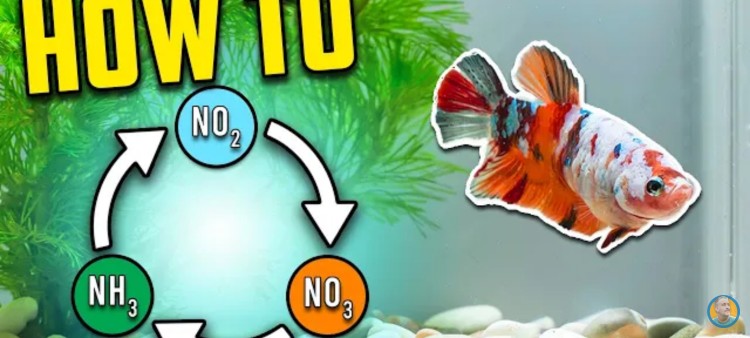Best Nitrogen Cycle Guide for Beginners
- Nov 05, 2022
- Anshika Mishra
- 271 0 0

Every fishkeeper knows the importance of a nitrogen cycle. When you feed your fish, they will extract the waste that will create ammonia, which is very toxic to fish.
So, thankfully, nature has an elegant solution of using biological filtration using beneficial bacteria and live aquatic plants to consume those toxic compounds and make the water pure and safe for the fish.
Unfortunately, a newly set up aquarium has none of these things. That's why you need to cycle your aquarium or grow some beneficial bacteria and life plants before adding any animals.
Here's how to use multiple methods together to cycle your tank faster.
Step 1: Seed the tank with beneficial bacteria
A lot of people like to do fish-less cycling. However, the problem with this is that not many fish keepers can complete this process.
Instead, you can run a second sponge filter in your other aquariums, and then when you need to set up a new tank, put that sponge filter in the aquarium.
However, if this is your first tank, you can find another fish keeper and maybe your local fish store and ask them for some used filter media or substrate. Seed this in your new setup.
Or you can also leave nitrifying bacteria in a bottle. You can also use the above methods to speed up the process.
The bottom line is that you need some source to seed the beneficial bacteria in your new tank.
Step 2: Add a live aquarium plant.
Plants are great because they, too, consume nitrogen waste and, in some cases, even more effectively than beneficial bacteria.
You'll need a suitable fertilized substrate, fertilizer, and lighting. To increase your biological filtration, you can use fast-growing plants because they consume more nitrogen waste quickly.
Step 3: Add Fishes
Usually, after a month, you have added the beneficial bacteria and the plants are when you should start adding a few fishes to test the water.
Add only the hardiest fish at the beginning.
Feed the fish very lightly for the first couple of weeks to test the cycle and ensure it can handle the bioload. This means that you get Ammonia and Nitrite to ensure they are 0ppm.
If the results are not zero, do some water changes to remove the toxic waste.
Add the fish gradually because it takes time for the prior fish to settle and for the bio media to balance the load.
Beware of the Bacterial Bloom
When the beneficial bacteria sense an excess of nutrients in the tank, it multiplies quickly. This can make your tank water look cloudy. But you can't do anything here but let the bacteria settle down.
Do not do a water change unless you detect a trace amount of Amoni or Nitrite.






About author